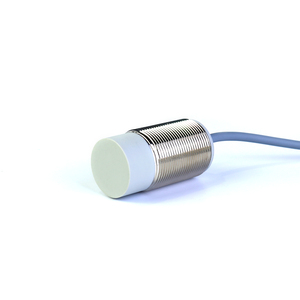Introduction to MM Proximity Sensors
MM proximity sensors are advanced devices designed to detect the presence or absence of objects without physical contact. These sensors utilize electromagnetic fields, infrared, or capacitive technology to function efficiently across various applications. Their compact size, reliability, and precision make them essential components in automation, manufacturing, and a range of industrial processes.
Types of MM Proximity Sensors
There are several types of MM proximity sensors, each tailored to specific applications and environments:
- Inductive Proximity Sensors: These sensors detect metallic objects through electromagnetic induction and are most suitable for industrial applications.
- Capacitive Proximity Sensors: Able to sense both metallic and non-metallic objects, including liquids, these sensors are versatile and can be used in diverse settings.
- Magnetic Proximity Sensors: Ideal for security applications, these sensors utilize a magnet to trigger a switch, making them perfect for door and window security.
- Photoelectric Proximity Sensors: Utilizing light to detect objects, these sensors are effective in various applications such as packaging and material handling.
Features and Advantages of MM Proximity Sensors
MM proximity sensors come equipped with several features that enhance their functionality and efficiency:
- Non-contact Operation: This feature eliminates wear and tear, resulting in longer lifespan and reduced maintenance costs.
- High Sensitivity: The sensors provide precise detection even at varying distances, allowing for greater flexibility in applications.
- Robust Design: Many MM proximity sensors are constructed to withstand harsh environments, making them suitable for industrial use.
- Quick Response Time: These sensors are capable of detecting and responding to objects almost instantaneously, essential in dynamic work environments.
- Versatile Mounting Options: MM proximity sensors can be easily installed in a wide range of machines and systems due to their compact size and design.
Applications of MM Proximity Sensors
MM proximity sensors have extensive applications across multiple industries due to their reliability and precision:
- Manufacturing: Used for automation tasks such as conveyor belt monitoring, assembly line coordination, and robot navigation.
- Automotive: Applied for assembly, quality control, and safety systems within vehicles.
- Security: Employed in alarm systems and automation for door and window safety checks.
- Food and Beverage: Utilized in packaging processes and for monitoring equipment to ensure hygiene standards.
- Electronics: Deployed in production lines for precise component placement and quality assurance.


















































